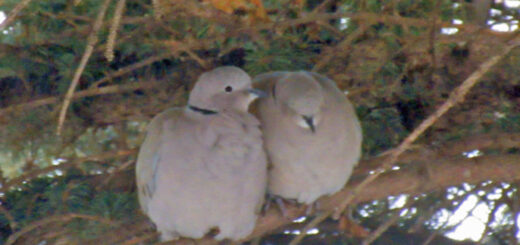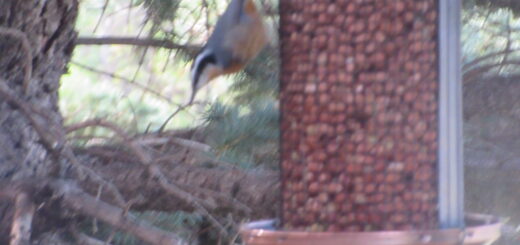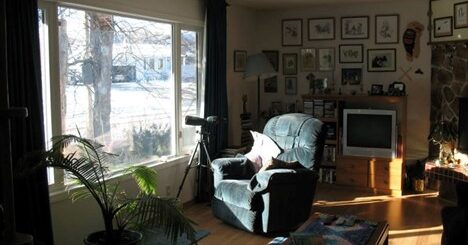Mule Deer. (Odocoileus hemionus). Is named for its big ‘mule-like’ ears.
Our Home and Garden Part 2.
Our small towns’ herd of Mule deer numbers about five individuals local to us, consisting of two females and last year’s twins, and a young male. To the west of town are a bigger herd of females and a separate herd of males.
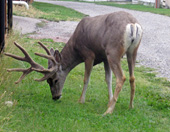
One reason that we do not grow flowering plants in our front garden is that the deer will eat them all, except for the Spruce trees and Prickly cactus,
The main reason for the citizens’ concern is that they can be rather aggressive while nursing their young, and are known to kill a small dog that confronts them.
Each June a female gives birth to twins in the Aspen forest, which is right opposite our picture window, and it is a thrill to see them when they emerge out from the trees. Quite often a mule deer will shelter from the heat of the day under a Spruce tree in our front garden.
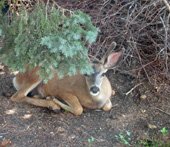
Late August will see a few mature male Mule deer come into town. Most are still in the velvet, by this I mean that the antlers are still growing to their full size and covered with skin and fur. Later the mature male deer will ‘trash’ the bushes and young trees to scrap-of the skin leaving the blood-drenched bone exposed.
Once ready to do battle the dominant male will collect a harem for himself, and guard them at all costs.
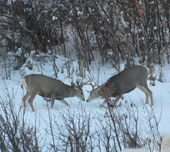

In late June we will see the beautiful twin fawns emerge from the Aspen forest.

All the above observations occurred local to our home.
Meet our next guest to our front Garden, The Red Fox. Coming soon.
